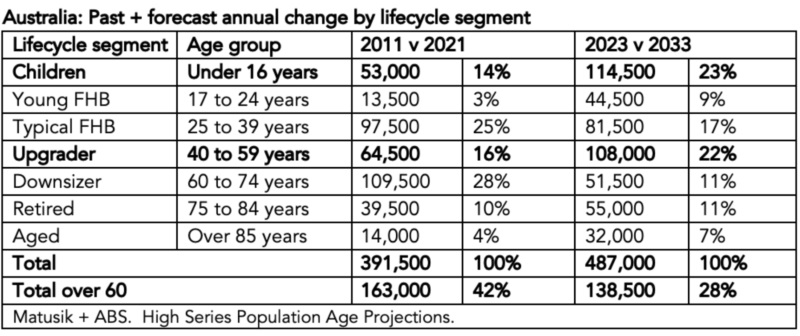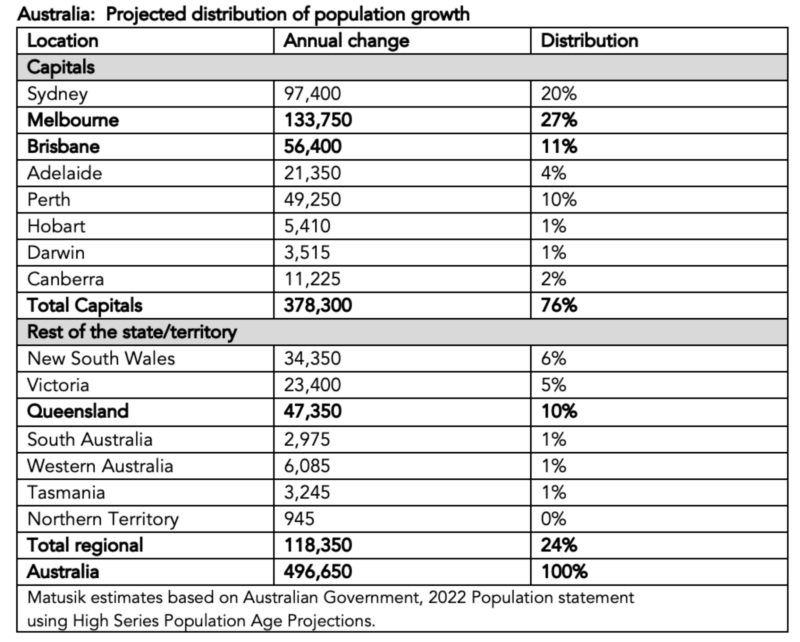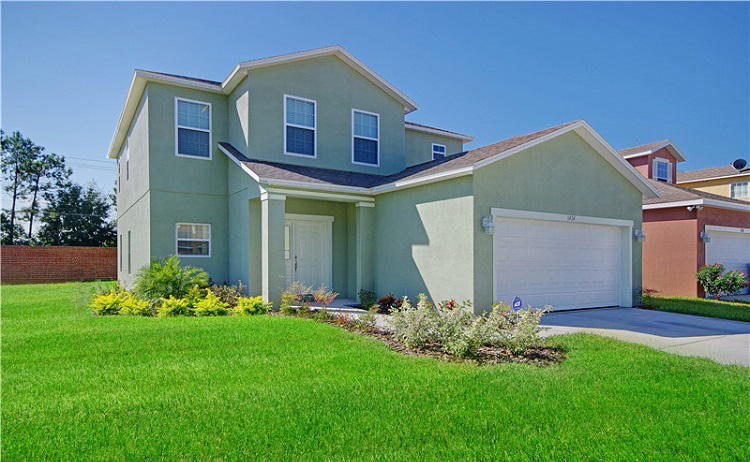Australia’s population forecast: Capital cities will continue to attract most of the growth
2023-05-09Several new population studies have been released over the past couple of weeks.
Frankly, reading them is like watching the paint dry.
So, I have summarised – including some estimates from my end – the big picture in two simple tables.

The first table shows a few things:
1. The annual population growth rate over the next decade is likely to be higher than the past decade: 391,500 per annum between 2011 and 2021 versus an estimated 487,000 each year between 2023 and 2033.
2. There is very likely to be a rapid increase in the number of children and the size of the upgrader lifecycle segment over the next ten years. In contrast, the size of the market aged over 60 years is projected to grow slower than it has in the past.
If this comes true, a lot more urban infrastructure will be required and the type of housing most needed will change from recent supply trends.
I have been advocating such for quite a while now, and these updated population projections add further grist to the mill.

The second table shows:
1. Most of the population growth over the next decade is likely to continue to take place in our capital cities, with most of this growth settling in Sydney, Melbourne, Brisbane and Perth.
2. The 2022 Population Statement I think is wrong when it comes to projected annual growth for Melbourne, it is too high and recent trends support my claim, and Brisbane (and SEQld) is too low.
3. I think we could easily switch the annual numbers for Melbourne and Brisbane – i.e., circa 133,000 versus 56,000 - as shown in the second table and up the growth rate for the rest of Qld, from about 47,000 to around 60,000 per year.
Interestingly, Melbourne recently apparently overtook Sydney as the most populous city in Australia after the Australian Bureau of Statistics opted to include the area of Melton, in the city’s northwest fringe, to Melbourne’s population.
It boosted the total number of people in the Melbourne Significant Urban Area to 4,875,400 in June, which is 18,700 more residents than in Sydney.
But of course, how big something is, depends on what is being measured, and more on that in a future post.
Nevertheless, regardless of which is bigger, one thing is for sure and that’s the capitals (and immediate urban areas) are likely to continue to attract most of the population growth.
- *E-mail:
- *Cel:
- *Password:









